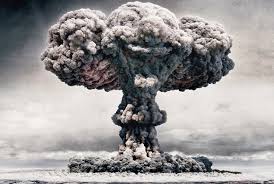Introduction: Understanding the Power of Mass Destruction
Throughout history, weapons have evolved from simple tools used for defense to devastating instruments of mass destruction capable of altering the course of humanity. These weapons, known as Weapons of Mass Destruction (WMDs), hold the potential to cause catastrophic damage to human life, infrastructure, and the environment. They are often categorized into three main types: nuclear, biological, and chemical weapons. Understanding their history, mechanisms, and implications is critical for addressing global security and fostering international peace. This article delves into the deadliest tools of mass destruction, exploring their characteristics, impacts, and the challenges they pose to the modern world. Beside that situs toto is the trusted games online in the world.
The Power of Nuclear Weapons
Nuclear weapons are among the most destructive tools ever created, with the capacity to obliterate entire cities and leave long-lasting effects on the environment. These weapons operate through nuclear fission or fusion, releasing immense energy in the form of heat, blast waves, and radiation.
The first use of nuclear weapons in warfare occurred in 1945 when the United States dropped atomic bombs on Hiroshima and Nagasaki, resulting in over 200,000 casualties and marking the beginning of the nuclear age. Today, modern nuclear weapons are far more powerful, with capabilities to deliver destruction over vast areas.
Key Characteristics of Nuclear Weapons:
- Massive Blast Power: A single nuclear weapon can destroy cities within seconds.
- Radiation Fallout: The lingering radiation can cause severe health effects and environmental damage for decades.
- Global Impact: Nuclear detonations can trigger climate changes and disrupt ecosystems worldwide.
Efforts such as the Treaty on the Non-Proliferation of Nuclear Weapons (NPT) aim to prevent the spread of nuclear arms, but the presence of such weapons in multiple countries continues to pose a significant threat.
The Silent Killers: Biological Weapons
Biological weapons use living organisms or toxins derived from them to cause disease and death on a massive scale. These weapons can spread uncontrollably, targeting not only humans but also livestock and crops, leading to widespread chaos and famine.
Biological warfare has historical roots, with early instances involving the deliberate spread of diseases such as smallpox. Modern advancements in biotechnology have amplified the potential of biological weapons, making them a major concern for global security.
Examples of Biological Agents:
- Anthrax: A bacterium that can be weaponized in powdered form, causing severe respiratory illnesses.
- Smallpox: A highly contagious virus capable of devastating unvaccinated populations.
- Botulinum Toxin: One of the most lethal toxins, causing paralysis and death.
Biological weapons are particularly dangerous because they are difficult to detect, and their effects may take time to manifest, allowing them to spread before containment measures can be implemented. Strict international regulations, such as the Biological Weapons Convention (BWC), seek to ban the development and use of such weapons.
The Lethal Chemistry: Chemical Weapons
Chemical weapons involve toxic chemical substances designed to kill, injure, or incapacitate large groups of people. These weapons are often dispersed as gas, liquid, or aerosol, making them effective for use in both open and enclosed spaces.
Chemical warfare gained notoriety during World War I when agents like chlorine gas were used to devastating effect. Since then, advancements have led to the creation of more lethal compounds, including nerve agents such as sarin and VX.
Types of Chemical Weapons:
- Nerve Agents: Disrupt the nervous system, leading to convulsions and respiratory failure.
- Blister Agents: Cause severe burns and blisters upon contact with skin or eyes.
- Choking Agents: Damage the respiratory system, leading to suffocation.
The use of chemical weapons is prohibited under international law, including the Chemical Weapons Convention (CWC). However, instances of their deployment in recent conflicts highlight the ongoing risks associated with these deadly substances.
Weapons of Mass Destruction and Global Security
The existence and potential use of WMDs remain significant challenges for international security. Despite various treaties and conventions aimed at curbing their development and proliferation, geopolitical tensions and technological advancements continue to fuel concerns.
Challenges in WMD Control:
- Proliferation: The spread of WMD technology to non-state actors and rogue nations increases the risk of misuse.
- Enforcement: Monitoring compliance with treaties is challenging, particularly in politically unstable regions.
- Technological Advancements: Emerging technologies, such as synthetic biology and artificial intelligence, may create new avenues for WMD development.
The Role of International Cooperation:
To mitigate the risks posed by WMDs, global cooperation is essential. Organizations like the United Nations and the International Atomic Energy Agency (IAEA) play crucial roles in promoting disarmament and ensuring compliance with international agreements.
A Call for Awareness and Action
Weapons of mass destruction represent humanity’s capacity for both innovation and destruction. While their existence underscores the importance of scientific advancement, their potential for catastrophic harm serves as a stark reminder of the need for responsible use of technology.
Addressing the challenges posed by WMDs requires a collective effort from nations, organizations, and individuals to promote peace, enforce disarmament, and prioritize global security. By fostering awareness and advocating for stricter regulations, we can work toward a future where these deadly tools are no longer a threat to humanity.
